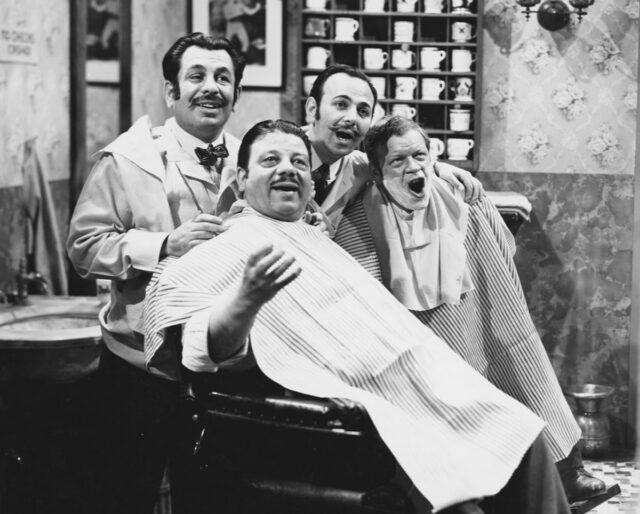
How to Improve Sight-Reading Skills
How to improve sight-reading skills An Introduction to Sight-Reading What exactly is sight-reading? Sight-reading is the ability to look at a sheet music chart and sing it for the first
Barbershop in popular culture continues to thrive. According to the BHS, there are ~20,000 members across 700 chapters in the United States and Canada with about that same number (~20,000) in Sweet Adelines International. There are more than 70,000 barbershop singers worldwide.
Barbershop music continues to be featured in American popular culture by Late Night talk shows, sung by famous people, and featured in cartoons.
When hearing the words “barbershop music” most people conjure images of Barbers and their patrons. Out front is a red, white, and blue barbershop pole. Next, you’d likely agree that the image in your head is likely middle class white men. Inside the barbershop is a quartet singing. They’re all wearing Victorian men’s straw boater hats and arm garters. Many images of barbershoppers performing in quartets from the early 1900’s through to modern times help to reinforce that stereotypical image.
The origins of barbershop are very different than what many people think. It might also surprise people that this isn’t what it’s like to be around modern barbershoppers. If you went to a barbershop musical performance like the shows that the Tidelanders produce, these stereotypes would be missing.
Our shows and our performers are not like the stereotypes discussed at all. New guests that were previously unfamiliar with barbershop music say that our shows and the songs we perform don’t fit what they pictured.
There are no straw hats, armbands, or striped vests worn by our members. There are no barbershop poles at our performances or where we rehearse. Some of us have facial hair but the handlebar mustaches are far and few between. We sing a wide range of music, even by performers you’d recognize from the 1970’s like the Eagles or even artists that are still relevant like Elton John. Some songs even though they were originally written and performed a long time ago are still popular today like “Smile”, “The Way You Look Tonight”, and “At Last”.
Please look at our events page and come see one of our shows to find out!
Do you think you know the history of barbershop music? First of all, the barbershop style of singing owes much of it’s origin story to the African American people. That includes their circumstances, culture, and music.
Music, singing, and dancing were all popular forms of entertainment during the 19th century. However, it was a different experience for the African American people.
References suggest strongly an African American origin for both the concept male quartet singing in barbershops and the particular style of harmonizing that has become known as "barbershop"1.
Lynn Abbott
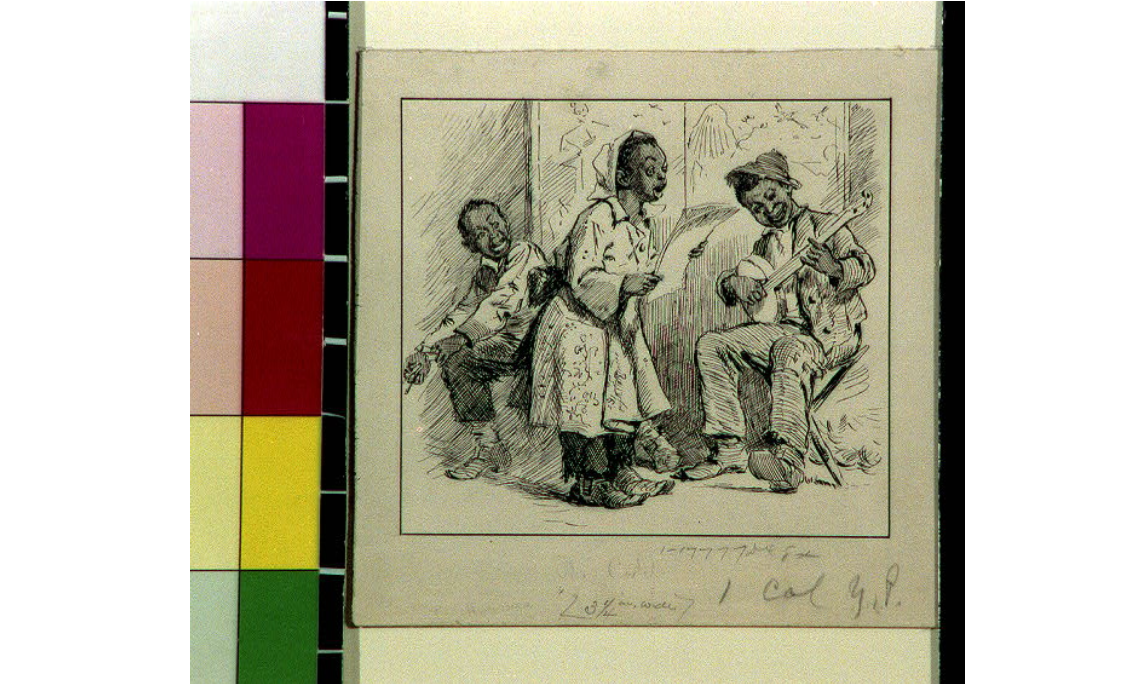
The Cortet [i.e. quartet], published circa 1882
During the days of slavery and even after the Civil War, many public places like theaters and concert halls were unavailable to African Americans. Historians believe that because of white prejudice of the times, African Americans were forced to find other means of entertainment. They typically met in homes and sang either accompanied or unaccompanied.
In his article, Abbott cites the vaudeville actor Billy McClain, “about every four dark faces you met was a quartet”. McClain was in Kansas City in the 1880s. According to historians, quartet singing was an African American male national pastime. Any and all songs of any genre were fair game for harmonizing by quartets.
It’s likely that the history goes back even farther to plantation slaves. They would have sung the blended harmonies that eventually spawned ragtime, jazz, and other forms of music still today popular today. The image of white Barbers should be replaced instead with black males. Many African American men combined the activity of male singing through harmony with games of cards, checkers, and beer. Many black men also enjoyed singing impromptu chords as well as using techniques known as “swipes” and “snakes“.
The barbershop was the gathering place and defacto men’s community center. That was especially true for African-American and working class immigrant men. Both groups of men were considered of a lower status than their white counterparts.
Since these men weren’t welcome in social organizations and country clubs, the barbershop became their adopted home away from home. A place for them to hang out, sing, socialize, debate and share news. Someone would start to sing a song most would recognize. Clients and the barbers would join in and sing, adding embellishments and harmonies.
Naturally, due to the popularity of quartets and barbershop singing the phenomenon swept the nation. Barbershop harmonizing was then adopted by American caucasian males. The number of men singing barbershop continued to grow. Barbershop singing continued to become quite popular at and after the turn of the century.
The Houston Tidelanders were founded in 1946. The initial meeting was well attended by about 125 men. That gave the founders a reason to obtain a charter from Society for the Preservation and Encouragement of Barber Shop Quartet Singing (SPEBSQSA); now known as the BHS. The charter was officially granted in November. The membership in the new Houston chapter grew to over 200 before the end of the year.
Four voices can produce much closer and more perfect harmony than four notes on a piano. That is one reason why we thrill to the effect of a perfectly blended quartet as we do to no other form of music.
Maurice E. Reagan
Many of us in the Tidelanders can attest to this fact. There’s no feeling quite like hitting a major chord and making it ring. It’s very satisfying to know that your voice was in-part responsible for making that incredible sound. You can read more about this technical aspect of harmony singing in Relative Pitch.
Barbershop in popular culture continues to be characterized by camaraderie. The hobby also includes impromptu or pickup quartets called Brigades. It also includes a more diverse make up that see variations of all male choruses and quartets, all female choruses and quartets, and mixed male/female choruses and quartets.
Barbershop remains a fan favorite and while not as popular as it used to be, is still is sung by thousands. Both men and women in quartets and choruses across the US sing in the barbershop style. Barbershop singers and songs can be found in popular movies (see our Article on Smile), animated shows, and by popular actors and other celebrities.
Family Guy features two quartets in three different episodes in Season 4. Episode 10 of Season 4 features the Four Peters. Earlier episodes include “The Vasectomy Song” and “You Have AIDS”. Both are very raunchy and won’t be playable on this page but your welcome to search for them on YouTube.
Episode 1 of Season 5 is called “Homer’s Barbershop Quartet” and features Homer fondly recalling his time singing in a barbershop quartet “The Be Sharps”. The gag is the fact that a “B Sharp” is commonly referred to as the note “C”.
The quartet consisted of Apu Nahasapeemapetilon (Tenor), Barney Gumble (Lead), Homer Simpson (Baritone), and Seymour Skinner (Bass). While The Be Sharps were a national sensation, on The Simpons, they were featured in seven episodes in total.
Episode 5 of Season 21 features the boys (Eric Cartman, Butters Stotch, Stan Marsh, and Kenny McCormick), performing favorites for the residents at Shady Acres.
In 1943, Bob Hope led a quartet overseas to entertain troops in World War II. He sang with Frances Langford (F), Tony Romano (M), and Jack Pepper (M).
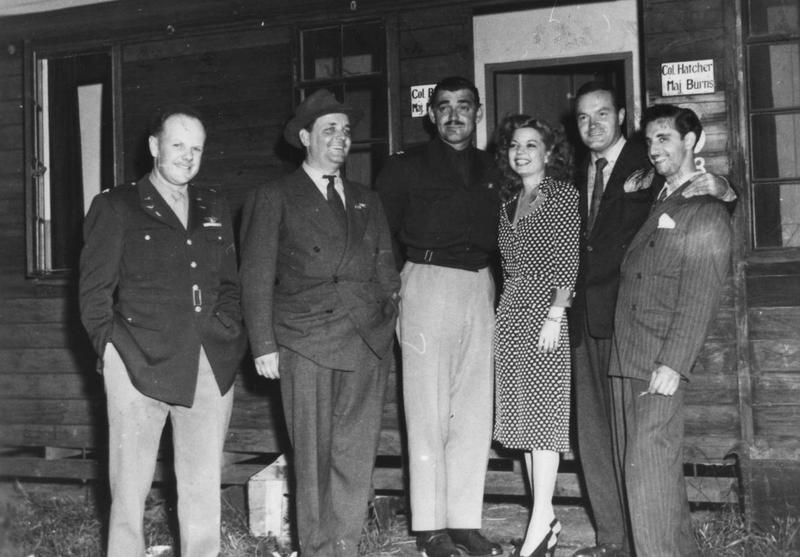
(L to R): Col. William Hatcher, Jack Pepper, Cpt. Clark Gable, Frances Langford, Bob Hope, and Tony Romano.
Sings with The Ragtime Gals. The bass is Tom Shillue, a barbershopper who won the Northeastern District Quartet Championship in 2003. Jimmy invites other celebrities to sing with his barbershop quartet. This YouTube clip from NBC and The Tonight Show features Tiny Fey singing a barbershop rendition of “That’s What I Like”.
Starting singing barbershop in High School. In this clip, Mike takes the stage with Forefront to sing bass on “Sweet and Lovely”.
Yes, exactly. That Harry S. Truman, the 33rd President of the United States.

How to improve sight-reading skills An Introduction to Sight-Reading What exactly is sight-reading? Sight-reading is the ability to look at a sheet music chart and sing it for the first

Generally in most years, the SWD sponsors an annual Chorus and Quartet competition. The exception is the pandemic year we experienced due to Covid-19. There was no competition during the pandemic. The BHS recent resumed chorus competitions in 2022.
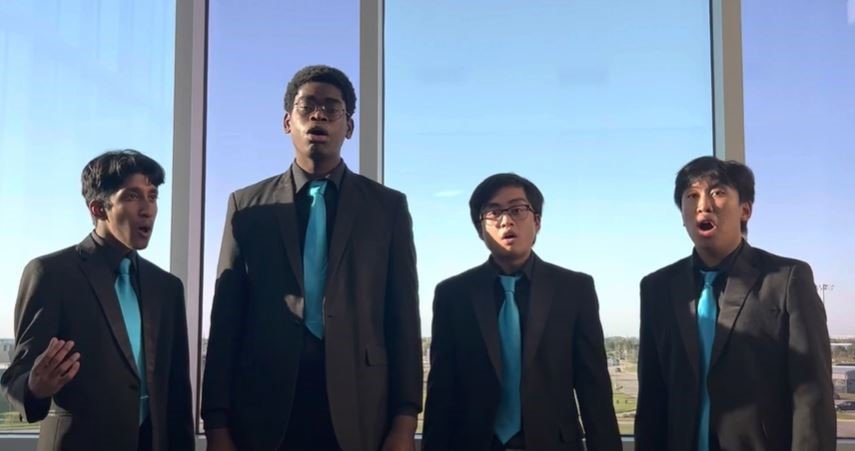
The Tidelanders excitedly sponsored our first singing competition. We promoted the contest to over 200 high schools in Harris and Fort Bend counties in Texas. We announced two winners (Men’s and Women’s) mid-April. We are looking forward to planning a bigger contest next year.

The Houston Tidelanders Chorus is pleased that we were able to perform for Clear Lake audiences once again! We’ve been performing in the Clear Lake area for about 25 years and it’s one of favorite shows.
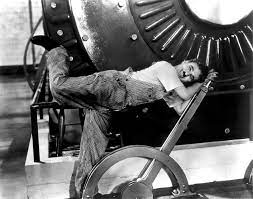
“Smile” continues to be considered timeless. Meaning the message always seems to be relevant. As long as it continues to be popular, artists will continue to cover and interpret it’s meaning in order to continue to have it resonate with audiences. Modern artists like Michael Jackson have arranged and performed it.